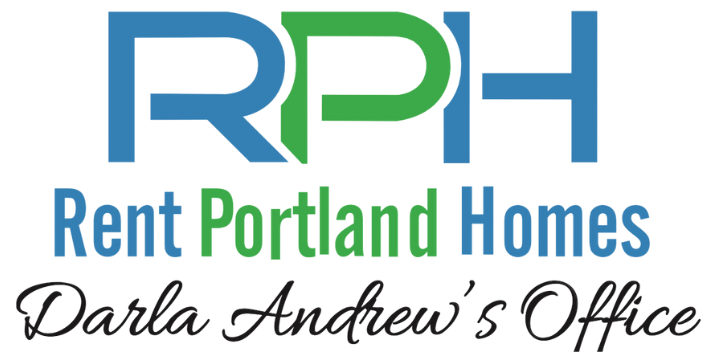According to legend, Lord Harold Samuel, a real estate tycoon in Britain, coined the famous expression: “There are three things that matter in property: location, location, location.” This adage is undoubtedly true for investment buyers, which is why selecting the location for your rental property is so critical.
Our first post in this two-part series examined how the market and a property’s physical location can impact your potential investment returns. In this second part, we’ll explore how different economic factors can set one place apart from others and influence the long-term growth potential of your investment. We hope to offer you a comprehensive guide for finding the right location for your next rental property.
Job Market and Economic Stability:
The economic stability of a location plays a pivotal role in the success of your rental property investment. A robust job market and steady economic growth indicate a thriving community, attracting potential tenants and ensuring a stable rental demand.
The Correlation Between the Job Market and Rental Demand
A thriving job market often leads to an increased demand for rental properties. When job opportunities are abundant, individuals and families may choose to relocate or seek rental accommodations within the area. Areas with a diverse range of industries and employers tend to offer more stability in terms of tenant occupancy.
Identifying Areas with Stable Economies and Employment Opportunities
Start by identifying the primary industries driving the local economy and the presence of major employers in the area. Regions with diverse industries are more likely to withstand economic fluctuations, offering better prospects for rental property investment. Then study employment rates over the past few years to identify any noticeable patterns or trends. A consistent and positive employment growth trend is a promising sign of economic stability. Finally, consider planned developments or infrastructure projects that could attract new businesses and job opportunities to the area. Regions with the potential for significant job growth offer excellent prospects for long-term investment.
Rental Property Regulations and Zoning
Sometimes areas with stable economies and employment can still be unfriendly for property investing. That’s why learning to navigate rental property regulations and zoning laws is crucial in selecting the ideal location for your investment. Understanding and complying with these regulations ensures legal compliance and impacts the feasibility and profitability of your rental property. Here’s what you need to know:
Familiarizing Yourself with Local Laws
Rental property regulations can vary significantly from one location to another, so it’s essential to be well-informed about the specific rules and requirements that apply to rental properties in your chosen area. Common regulations may include occupancy limits, safety standards, and maintenance requirements.
Additionally, zoning laws define the permitted land use for specific areas, determining where residential, commercial, and industrial properties can be located. Understanding the zoning regulations will help you identify suitable locations for your rental property investment.
Understand Restrictions on Rental Properties
Certain neighborhoods or municipalities may impose restrictions or limitations on rental properties. These restrictions could include bans on short-term rentals, rent control measures, or limitations on the number of rental units in a particular area. Understanding these guidelines is essential to avoid potential legal issues and protect your investment interests.
In the following section, we’ll explore the significance of rental yields and property taxes in your location selection process. Understanding these financial aspects will assist you in making a well-informed investment decision.
Rental Yields and Property Taxes
When choosing the ideal location for your rental property, it’s essential to consider the financial aspects that directly impact your investment returns. Evaluating rental yields and property taxes will help you make informed decisions and maximize the profitability of your rental property investment.
Estimating Potential Rental Yields in Different Areas
Rental yield is a critical metric that measures the return on investment generated by a rental property. It’s calculated by dividing the annual rental income by the property’s purchase price or total investment cost—research rental prices in various neighborhoods to estimate potential rental yields.
While higher rental yields may seem appealing, it’s essential to strike a balance between yield and other factors like location, tenant demand, and property appreciation potential.
Consider the Impact of Property Taxes on Your Investment Return
Property taxes can significantly affect your rental property’s cash flow and overall return on investment. Higher property tax rates in specific locations may eat into your rental income and reduce profitability. Conversely, areas with lower property tax rates can enhance your net income and contribute to a higher return on investment. When evaluating potential locations, take property taxes into account, along with other factors such as rental income, maintenance costs, and property appreciation.
It’s important to note that rental yields and property taxes are interconnected factors that influence your rental property’s financial success. Balancing these considerations will enable you to identify locations that align with your investment goals.
Long-Term Investment Potential
When selecting the ideal location for your rental property, it’s essential to consider its long-term investment potential. A location with promising prospects for property value appreciation and sustained growth can significantly enhance the overall profitability of your investment. Here’s how you can evaluate the long-term investment potential of a potential location:
Understanding Property Value Appreciation
Property value appreciation refers to the increase in the market value of a property over time. A location with a history of steady or rising property values indicates a stable and potentially lucrative real estate market. Research historical property price trends in the area to gain insights into its appreciation potential.
Consider factors that could contribute to property value appreciation, such as proximity to job centers, educational institutions, transportation hubs, and desirable amenities. Areas experiencing significant infrastructure developments or urban revitalization projects may also have higher appreciation potential.
Considering Demographic Trends and Population Growth
Population growth is a key driver of demand for rental properties. Areas with increasing populations will likely experience higher rental demand, which can positively impact rental income and property occupancy rates.
Evaluate demographic trends in the location, including population growth rates, age distribution, and household income levels. A growing population with diverse demographics can indicate a vibrant rental market with ample opportunities for attracting tenants.
Exploring Opportunities for Future Expansion or Diversification
Forward-thinking investors consider the potential for future property expansion or diversification in their chosen investments. A location with available land or properties suitable for expansion offers flexibility for future growth and portfolio diversification.
Identify areas with zoning allowances that permit property expansions or redevelopment. Expanding your rental property portfolio within the same location can be a strategic advantage as your investment grows.
Partnering with a Property Management Company:
When it comes to successfully navigating the process of choosing the ideal location for your rental property, partnering with a reliable and experienced property management company can be a game-changer. Here’s why collaborating with Rent Portland Homes by Darla Andrew can significantly enhance your investment journey:
- Real estate investing involves meticulous planning, ongoing maintenance, tenant screening, and rent collection. Professional property management services streamline these processes, saving you time and effort while ensuring optimal returns on your investment.
- Our property management team is well-versed in location analysis and can offer insights into various neighborhoods and their suitability for rental properties. We consider market trends, rental demand, and potential for property value appreciation to guide you toward a location that aligns with your investment goals.
- Our commitment extends beyond location analysis and property acquisition. We excel in optimizing rental income by setting competitive rental rates based on market conditions. Our tenant screening process also ensures that high-quality tenants occupy your property, reducing vacancies and minimizing potential risks.
- Moreover, our proactive maintenance approach ensures that your property remains in top condition. Well-maintained properties enhance tenant satisfaction and encourage long-term tenant retention. Our expertise in tenant relations and conflict resolution further contributes to a harmonious and stress-free rental experience for you and your tenants.
In conclusion, selecting the ideal location for your rental property requires a comprehensive understanding of the market, safety considerations, economic stability, long-term growth potential, and so much more. With Rent Portland Homes by Darla Andrew by your side, you can navigate these aspects with ease and confidence.


Recent Comments